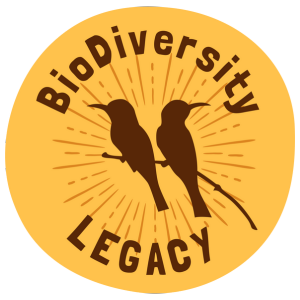A living legacy
BioDiversity Legacy offers pioneering conservation pathways that empower landholders and communities to permanently protect their land – strengthening biodiversity while bringing people together to care for the places they love.
SAFE OWNERSHIP STRUCTURE
With the assistance of Maddocks Lawyers, we created a safe ownership structure that enables land to be taken out of insecure ownership structures (e.g. private property market) and transferred into a secure structure that supports the ongoing protection of land and locally-led stewardship. This means land can be returned to community ownership so that individuals and groups can access and care for the land without having to own it. The approach can be tailored to the landholder or donor’s vision and circumstances.
To support the transfer process, BioDiversity Legacy provides knowledge assistance and information packages and can facilitate links within our network and to appropriate professional services that support pathways for long-term environmental protection.
Legal entity
The technical term for local landholding entities is a Company Limited by Guarantee. This is a legal entity with no shareholders; the organisation cannot be owned by any individual or group and is instead governed by a constitution overseen by its members.
This company type supports a not-for-profit, charitable entity whose purpose is ‘advancing the natural environment’ – meaning that the types of activities occurring on the land must be nature-positive.
Governance
These local landholding entities are community-governed by relevant individuals and/or community members and designed to operate independently and at local scales with stewardship arrangements that foster partnerships and collaboration.
BioDiversity Legacy offers additional governance support to assist the local landholding entities to uphold their environmental mission. BioDiversity Legacy can also hold land itself, or act as an interim owner to support the local context or until the landholding entity has been established.
Selection criteria
For us to move forward, properties and projects need to have collaborative support, by which we mean the ongoing involvement of local groups such as Landcare, Traditional Custodians, environmental NGOs, councils, ecological specialists and/or other relevant parties – or the potential to build these connections.
There are a few key filters we draw from to make sure we can support your project. Please contact us to learn more.
Who we work with
Landholders
Who own and care for properties with biodiversity values or have revegetated properties. When the time comes to move on, these landholders need a pathway to ensure their life’s work is not undone.
Government agencies and regional authorities
As a not-for-profit organisation, we have the knowledge, network and ethical frameworks in place to enable the transition of public land to community stewardship.
Environmental and community groups
Many conservation projects have a limited lifespan and succession plans are required to ensure the safeguarding of those efforts. In most cases, Biodiversity Legacy can assist with the planning and transition.
Philanthropic pathways
BioDiversity Legacy encourages and supports donors and philanthropists to protect the landscapes they love. For example, individuals and families can directly donate properties. In this case, BDL will work with you to understand your vision and consider various options for stewardship. Individuals and philanthropists can also make direct financial donations to secure vulnerable properties.
An example here would be: a local landholder or community group is making efforts to secure an important property, but may not have the capital. Financial donations in these scenarios can be the catalyst for major change. Our Deductible Gift Recipient status enables all sorts of investors to make tax-deductible donations.
stewardship
As the land asset is appropriately held in a well-governed land ownership structure, the stewardship entity can be under a more relaxed structure, e.g. a community not-for-profit such as an Incorporated Association.
Flexible stewardship arrangements allow for the inevitable ebbs and flows that occur with individual/community stewardship groups, including stewardship changes over time (e.g. from a landowner to a Traditional Custodian group).
Rather than imposing stewardship, we support grassroots organisations where place-based, local knowledge is combined with specialised advice and partnerships to provide the best care for the land. In particular, we’d be looking to support next-gen stewardship (the BDL structure allows for the stewardship entity to change over time).
Who are our stewards?
Depending on the local context, activities that support this purpose can take many forms. Examples include (but are not limited to):
Stewardship by Traditional Custodian groups and relevant partners.
Stewardship by existing environmental NGOs and relevant partners.
Stewardship by the current landholder and relevant partners.
Stewardship by community group/s such as Landcare or council.
Stewardship by existing landholder supported by Trust for Nature management plan (or other State equivalent covenanting body).
Stewardship by existing occupying landholder and potential pathway to transition future stewardship to any of the above-mentioned groups.
Top banner image: Yellow-footed Antechinus, Strangways Vic, with thanks to Patrick Kavanagh.
